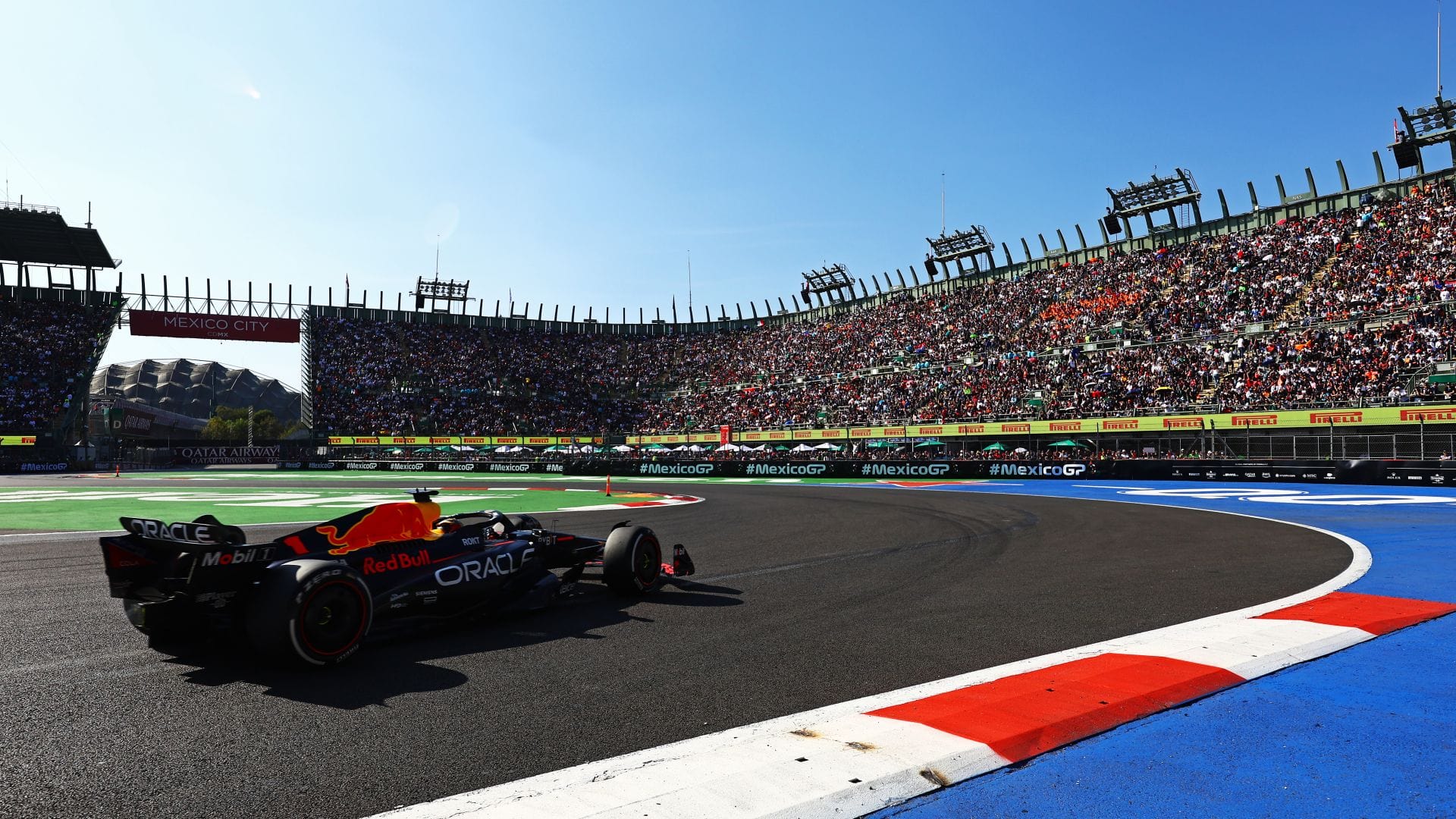How Many Tracks Are In F1?


You’ve heard the roar of engines and the cheer of the crowds, but have you ever wondered just how many tracks are in F1? As a fan or a curious newcomer, understanding the scale of Formula 1 racing is essential to appreciating the global spectacle it truly is.
As of the 2023 F1 season, Formula 1 features 24 circuits spread across the globe, each with its unique challenges and characteristics. While there are 24 circuits, there are only 23 races as the Emilia Romagna Grand Prix was cancelled due to heavy flooding in the region.
In this article, we will delve into the world of F1 racing tracks. You’ll get to explore the history, the technological advancements, and the sheer excitement that each circuit brings to the table. Whether you’re a die-hard fan or just getting to grips with the sport, this journey through the F1 calendar will enhance your understanding and appreciation for this high-octane sport.
Key Takeaways
- The 2023 F1 season features 24 unique tracks available for use.
- Circuit lengths vary significantly, with Monaco being the shortest and Spa-Francorchamps the longest.
- The variety of F1 circuits demands a diverse range of driving skills, making the championship more engaging and exciting.
Understanding F1 Tracks
Formula 1 is the highest class of open-wheeled auto racing governed by the Fédération Internationale de l’Automobile (FIA). The Formula 1 calendar consists of various circuits worldwide where races take place. In the 2023 season, there are 23 circuits utilized, with 24 tracks available for use.
The types of Formula 1 tracks can be classified into three categories: Permanent Formula 1 Tracks, Street Formula 1 Tracks, and Road Formula 1 Tracks. Permanent tracks are purpose-built facilities designed specifically for auto racing. Street tracks are temporary racing circuits set up on public roads, while road tracks incorporate both permanent and temporary sections on private or public roads.
Embark on a thrilling circuit-by-circuit adventure with our comprehensive guide to the Formula 1 tracks of the season. Each entry in our guide comes complete with a downloadable map, offering you an insider’s view of the twists, turns, and technicalities that make each track a unique testament to the sport’s engineering marvels and drivers’ prowess. Whether you’re planning your next race day viewing or simply indulging in the dream of tracing these tracks yourself, our detailed maps are your ticket to becoming a Formula 1 savant.
Track limits, imposed by the Formula 1 rules, play an essential role in maintaining the safety and fairness of the races. The FIA takes strict measures to enforce these track limits to ensure that drivers abide by the regulations.
Classification of F1 Circuits
Formula One circuits can be classified based on their layouts, surroundings, and unique features. These tracks host the fastest and most technologically advanced racing cars in the world. Some popular circuits include Monza, Miami International Autodrome, Bahrain International Circuit, Circuit of the Americas, Circuit Gilles Villeneuve, and Circuit Paul Ricard, among others.
Traditional Circuits: These are purpose-built tracks specifically designed for Formula One racing and often feature multiple configurations to suit various racing series. They include the Bahrain International Circuit, Shanghai International Circuit, and Circuit de Barcelona-Catalunya. These tracks typically have modern facilities, wide run-off areas, and a blend of high-speed straights and challenging corners.
Street Circuits: These tracks are located on public roads in urban settings, which are temporarily closed for racing events. Notable examples are Circuit de Monaco, Marina Bay Street Circuit, and Baku City Circuit. They tend to have tight and twisty layouts, with limited run-off areas and unforgiving barriers surrounding the circuit. Street circuits usually provide thrilling racing due to their unpredictability and the risks involved for drivers.
Circuit Hybrid: A combination of purpose-built and street circuit elements can also be found in Formula One. The Circuit Gilles Villeneuve is an example of such a hybrid layout, utilizing a mix of public roads and dedicated racing sections. This circuit is located on man-made Notre Dame Island in Montreal, Canada, and features high-speed straights, along with hairpin turns and chicanes.
Historic Circuits: Some Formula One tracks have a rich history in motorsports, with circuits such as Monza, Circuit de Monaco, and Spa de Francorchamps showcasing this heritage. Monza, for instance, is one of the oldest and most prestigious tracks in Formula One, having hosted races since 1922. It features legendary corners like the Parabolica, as well as high-speed straights, making it a favorite among drivers and fans alike.
As Formula One continues to evolve and expand its global reach, new circuits like the Miami International Autodrome and Circuit of the Americas have been added to the calendar. These tracks offer fresh challenges to drivers and teams alike, adding to the excitement and unpredictability of the World Championship.
Different Years, Different Tracks
The Formula 1 World Championship is an ever-evolving series, with the racing calendar changing each year, meaning the number of tracks in each season varies. For instance, the 2023 Formula 1 season comprises 23 races, while the 2024 schedule will have 24 races as we see the return of the Chinese Grand Prix.
Throughout the years, a total of 69 distinct race tracks have been part of Formula 1. The first-ever F1 race was held at Silverstone in the UK, a circuit that remains a fixture on the annual calendars. Some other famous Formula One race tracks include Circuit de Monaco, Autodromo Nazionale di Monza, and Spa Francorchamps, each with their own unique characteristics and history.
A noteworthy trend in recent years is the rise of street circuits in Formula 1. The 2023 season, for example, will see seven rounds, nearly one-third of the 23 races on the calendar, taking place at street venues instead of traditional circuits. Prominent examples of these street circuits are Singapore, Monaco, Baku, and Miami. These tracks contribute to the overall diversity of circuits in the sport, bringing new challenges and visual appeal.
As Formula 1 pushes toward sustainability and new markets, there might be more changes to the list of tracks in the future. With environmental awareness at the forefront of the sport’s ongoing plans, it is possible that new circuits will be developed with eco-friendly infrastructure, while existing venues are adapted for the new generation of racing cars.
The number of tracks in Formula 1 varies across different years and seasons. The racing calendar is dynamic, hosting a mix of traditional circuits, street venues, and the potential for eco-friendly tracks in the future. As the Formula 1 World Championship continues to evolve, so too will the range of circuits that grace the calendar.
Coming Up Next in F1
The Formula 1 calendar for 2023 is more packed than ever, with a joint-record schedule in place. As the sport continues to grow, exciting new tracks are being added every year, ensuring fans are in for a treat in the coming years.
One of the most anticipated additions to the F1 calendar is the Las Vegas Grand Prix. Set to debut in 2023, this race will take place on a thrilling street circuit that showcases the iconic Las Vegas Strip. The event promises to be a spectacular showcase of speed, glamour, and entertainment, befitting the vibrant city it’s hosted in.
Beyond 2023, Formula 1 shows no signs of slowing down. The organization has announced that there will be a record-breaking 24-race calendar for 2024, further expanding the sport’s reach and giving fans even more opportunities to witness the thrilling action on the track.
Formula 1’s commitment to retaining classic tracks while introducing new venues ensures that the calendar remains fresh and engaging for fans and participants alike. From iconic circuits like Monaco and Silverstone to newer additions such as the Miami Grand Prix, the diverse range of locations caters to the various preferences of the global F1 audience.
The future of Formula 1 looks bright, with impressive additions like Las Vegas on the horizon and a continually growing and evolving schedule. Fans can look forward to a thrilling ride in 2023 and beyond, as the world of F1 continues to expand and break new ground.
You may also like…
What Is The Minimum Length Of An F1 Circuit?





